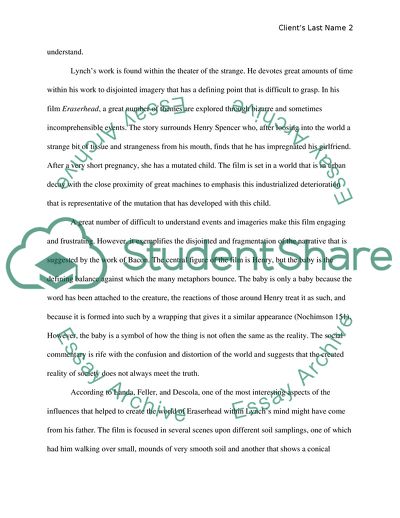Cite this document
(Style and Influences of the Filmmaker David Lynch Essay, n.d.)
Style and Influences of the Filmmaker David Lynch Essay. https://studentshare.org/visual-arts-film-studies/1743999-filmmaker-david-lynch-style-and-influences
Style and Influences of the Filmmaker David Lynch Essay. https://studentshare.org/visual-arts-film-studies/1743999-filmmaker-david-lynch-style-and-influences
(Style and Influences of the Filmmaker David Lynch Essay)
Style and Influences of the Filmmaker David Lynch Essay. https://studentshare.org/visual-arts-film-studies/1743999-filmmaker-david-lynch-style-and-influences.
Style and Influences of the Filmmaker David Lynch Essay. https://studentshare.org/visual-arts-film-studies/1743999-filmmaker-david-lynch-style-and-influences.
“Style and Influences of the Filmmaker David Lynch Essay”. https://studentshare.org/visual-arts-film-studies/1743999-filmmaker-david-lynch-style-and-influences.


